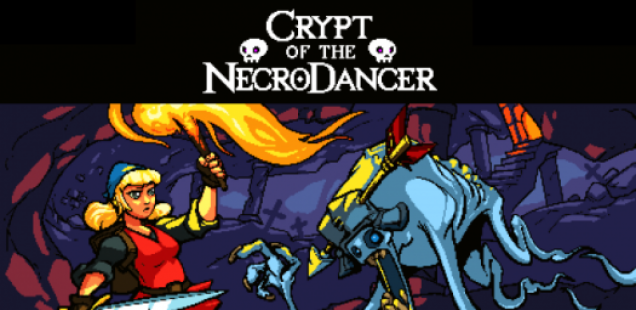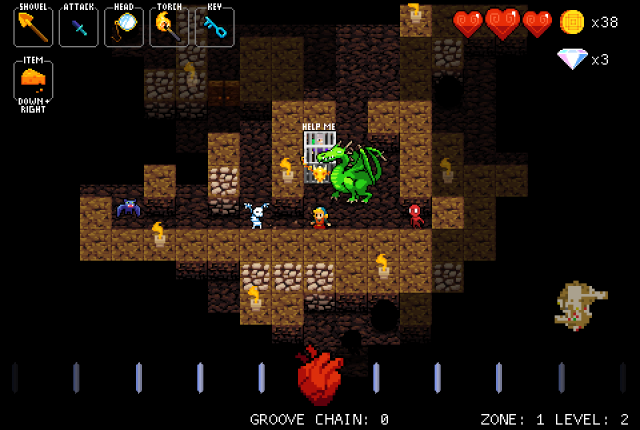
Art Tickles: Things That Go Bump
Taylor Hidalgo hears his doom coming, and it’s shaped like a colorful skeleton.
There’s a certain rhythm to life that people get used to, given enough time.
Schedules come and go with the passing of the week, days pass in sequence, and the familiarity of the passing makes each pass quicker. Things fall in time, giving participants an awareness of what comes ahead. The more one experiences, the easier each cycle becomes. This routine is the make-up of modern society, informing the pace of work weeks, the availability of socialization opportunities, and the schedules and time of life.
These routines are really an exercise of cognition, a method of mental understanding, and not necessarily one of physical doing. The awareness of the passage of time is one that helps people make more informed decisions about their behaviors, it doesn’t necessarily control them. There are those whose careers and lives defy these sequences, just as there are those who thrive wholly within them. That said, a level of deftness with the sequence belies a number of benefits greatly exceeding its lack.
Games like Crypt of the Necrodancer embody this principle.The player must have a strong measure of the rhythm and pace in order to meet each obstacle and goal head-on, as often this awareness makes the difference between premature death and deftly handled victory. This awareness of time comes from familiarity with the systems and rhythms. With time, it becomes much easier for players to operate in time, and the rhythms of the game become less daunting. The creatures cease to be so threatening, the tools become more plentiful in seeming, and everything starts to gel. The grand picture, like the rhythms, can be gotten used to.
 As levels progress, enemies change, patterns shift, and threats multiply. Not only do the demands of patterns and of player timing increase, but the pace of the music also gains an edge. Beats come fast, enemies come harder, and it becomes less about how well the player manages to navigate the few threats, and more about how effective players are at avoiding the worst of the threats. The thumping beats echo the pounding heart, each passing beat represents the growing chance of running into something vast, powerful, and exceedingly dangerous.
As levels progress, enemies change, patterns shift, and threats multiply. Not only do the demands of patterns and of player timing increase, but the pace of the music also gains an edge. Beats come fast, enemies come harder, and it becomes less about how well the player manages to navigate the few threats, and more about how effective players are at avoiding the worst of the threats. The thumping beats echo the pounding heart, each passing beat represents the growing chance of running into something vast, powerful, and exceedingly dangerous.
As the levels deepen, so too do the expectations of perfection from the player. The rhythms are more demanding, the difference between a winning move and a deadly mistake take place in less than fractions of a second, and these are made in sequence, as part of the ever-impending march of the next beat. Players who dawdle too long often find themselves in hard positions, and those who decide too hastily find themselves worse off than if they’d been indecisive. As the lower levels go, the more unforgiving the game becomes. It isn’t long before the sequenced, rhythmic, well-timed music becomes beautifully choreographed chaos. Players that can’t deftly handle the chaos soon find themselves off-foot, off-beat, and beaten down.
Because of these mounting tensions, and the limits to how long a song will go on, there is something of a finality to the proceedings. It’s less a game about whether or not a player will die, but much more a question of when and how. The rhythmic knowledge and well-honed experience will only stave off the machinations of the beat, not thwart them entirely. Inevitably, even the best laid plans and well-executed feats of skill will lead to the final stroke of the musician’s hand, and the end shall arrive as surely as the first beat of the next song.
 As in life, the passage of time will come regardless of what a person does. Monday doesn’t care that the project due Tuesday isn’t done yet. It will come in time, regardless of what people do in the interim. So too does the coming of the end of a Crypt of the Necrodancer run. It isn’t a game that settles in morbidity though, despite how the title may make it sound. It’s a game that celebrates the doing, as well as the victories.
As in life, the passage of time will come regardless of what a person does. Monday doesn’t care that the project due Tuesday isn’t done yet. It will come in time, regardless of what people do in the interim. So too does the coming of the end of a Crypt of the Necrodancer run. It isn’t a game that settles in morbidity though, despite how the title may make it sound. It’s a game that celebrates the doing, as well as the victories.
Perhaps it’s for reasons like these that human cultures are abundant with festivities of the dead. In North America, we celebrate La Dia de los Muertos and All Hallows’ Eve as a way to celebrate and face the ever-approaching horizon, one that will inevitably come for everyone. Witches, skeletons, ghosts, graves, and candy are all ways to look not just toward the impending end, but beyond it, and see new ways to thrive and find joy even in the face of an inescapable end.
For that reason, it’s hard not to love what Crypt of the Necrodancer encapsulates. There is genuine playfulness seeping from of every aspect and mechanic. There is life teeming even in the final few beats. The joyful expression of life shines hardest in the face of inescapable ends. Regardless of how hard one fights, regardless of how desperately one struggles, the end will come.
And if there is any luck in the world, like Crypt of the Necrodancer, it will be cartoonishly colored and boisterously happy. Even in death, it jubilantly celebrates life.
Taylor Hidalgo is a writer by hobby, grasping at the edges of professional work. He’s a fan of the sound of language, the sounds of games and the sound of deadlines looming nearby. He sometimes says things on Twitter and his blog.